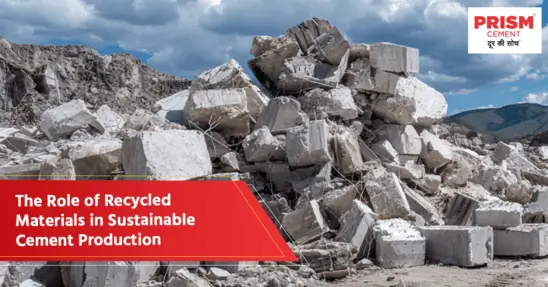Choosing the right construction cement is paramount to ensuring building structure and long-term durability. Various types and grades of cement are used based on the nature of the structure, environmental conditions and required strength. Understanding the different cement grades and their applications will help ensure better material selection for durability and structural integrity. This blog helps to simplify construction cement grades, reviewing their types, strengths and uses. Learning these details matters for professionals as well as residents undertaking construction projects.
What Are Cement Grades?
Cement grades are the 28-day curing compressive strength of cement expressed in megapascals (MPa). Cement grades provide a measure of the strength of cement to withstand loads and pressures, serving as an important indicator for choosing appropriate cement for given applications. The grade system assists in distinguishing various types of cement.
Types of Construction Cement Grades
Typically, construction cement is divided into three major grades: 33, 43, and 53. These major grades are applicable to Ordinary Portland Cement (OPC). Yet, others such as Portland Pozzolana Cement (PPC) and composite cement are also used extensively, each having its own set of characteristics and uses. These are basic building materials.
Strengths of Different Cement Grades
- 33-Grade Cement: This grade gets a minimum strength of 33 MPa under compressive strength at 28 days. The grade is employed for purposes of general constructions, such as plastering work and small concrete works.
- 43-Grade Cement: It has a minimum strength of 43 MPa, making this grade appropriate to use in the broader spectrum of works, from reinforced concrete structures to general activities of construction.
- 53-Grade Cement: Having a minimum compressive strength of 53 MPa, this grade is the most powerful of the three OPC grades. It is used in high-strength concrete works, including bridges, roads, dams, and multi-story buildings.
Applications of Various Cement Grades
- 33-Grade: Suitable for general building works, plastering and non-structural purposes
- 43-Grade: Applicable for reinforced concrete works, general building construction and medium-strength concrete works
- 53-Grade: It is applied for usage in high-strength concrete work, such as high-rise buildings, bridges, flyovers and other construction where fast setting and high early strength are needed.
- Composite cement is utilized in many applications and is available in any building materials store near me.
- Precast cement is applied for prefabricated components.
- Portland Pozzolana Cement (PPC): It is a good choice for residential, commercial and industrial construction. It is also used for marine structure, hydraulic structure, mass concrete work and environmentally sustainable construction.
Selecting the Correct Cement Grade for Your Project
In house construction projects, 43-grade cement is typically used for general applications such as plastering, flooring, and brickwork. In contrast, 53-grade cement is preferred for heavy load bearing structural elements which are critical to the building’s strength, stability, and overall structural integrity. All of these are critical cement for construction decisions.
Conclusion
It is important to understand construction cement grades to achieve durable and effective building results. Through consideration of the strength and uses of various cement grades, builders can make informed decisions in support of successful construction projects.
FAQs
Q1. What are the various types of construction cement grades and their applications?
Answer: The grades are 33, 43, and 53, based on their compressive strength. Grade 33 is used for general purposes, while Grade 43 is used for reinforced concrete and Grade 53 for high-strength purposes. Additionally, there are PPC and Composite cement, which have specific applications.
Q2. How is cement grade decided, and why is it crucial in construction?
Answer: Cement grade is ascertained by testing the compressive strength of cement after 28 days of curing. It is crucial because it tells us about the load-bearing capacity of the cement, which helps maintain structural integrity.
Q3. Which cement grade is most suitable for house construction?
Answer: 43-grade cement is usually preferred for general house construction because of its versatility and strength. 53 grades can be utilized for critical structural components.
Q4. How are 33, 43, and 53-grade cement different from each other?
Answer: They vary in their compressive strength: 33 MPa, 43 MPa, and 53 MPa, respectively. This implies that they are fit for various construction purposes.
Q5. How does cement grade impact the strength and durability of a structure?
Answer: Greater cement grades yield more compressive strength, which gives rise to stronger and more durable structures, particularly in challenging applications.




